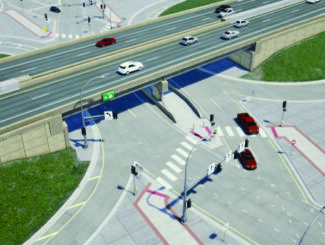By Molly Just, Senior Planner and Eric Zweber, Senior Project Manager, WSB
As Minnesota communities adapt to enable long-shuttered restaurants to reopen and adhere to social distancing and health and safety standards, they are looking for ways to address outdoor seating in compliance with the June 1st – Stay Safe Minnesota government order.
While outdoor restaurant dining has proven to attract a larger customer base for many businesses looking to boost their summer season revenue, other restaurants are faced with space limitations and licensure issues that prevent them from accommodating outdoor seating. As restaurant owners struggle to consider the many factors that will determine a June 1st reopening, cities can take proactive steps to support the economic growth in their communities, while also keeping their residents safe.
WSB’s city planners have put together a list of key considerations for enabling outdoor dining under the June 1st – Stay Safe order, along with a list of resources including agencies and organizations that support and regulate outdoor restaurant dining.
Outdoor restaurant seating | Stay Safe Minnesota
Primary issues to consider prior to establishing an outdoor dining space.
Liquor License
- Make any necessary modifications to liquor license
- Must be compact and contiguous to modify on-sale liquor license
- If the site cannot be compact and contiguous, consider
a caterer’s license
- Caterer’s license must be for an event of a limited time and cannot be used daily
- An updated liquor liability insurance is required for all businesses
- Update business site map and file with DPS Alcohol and Gambling Enforcement Division
Health and Safety
- Consider updating the business’ Health Department Certificate
Tent Set-Up
- Plan for summer rain to keep space open
- Consider rules for outdoor patio space and smoking
Note: Americans with Disability Act (ADA) and Fire Code regulation must be followed and cannot be waived.
Potential issues to consider for businesses located on private property.
Parking
- Seating restrictions allow maximum of 50 patrons at one time
- Parking requirement allows one stall per three seats
- Maximum parking requirement up to 17 stalls
One-Way Traffic
- Option to reduce parking lot drive aisle width to 18 feet or less
- Must allow seating area to occupy one half of parking stalls and part of drive aisle
- May require parking stall re-striped for angled parking
Additional issues to consider for restaurants on public property.
- Balance of seating and dining areas in a public space
- Special Event Permit for businesses who need the space available on a limited basis
- Consider temporarily restricting on-street parking to allow more space for outdoor seating
- Consider temporary decking options for accessibility
Agencies and organizations who support outdoor dining regulations.
Minnesota Department of Employment and Economic Development
Department of Public Safety
- Minnesota Statute 340A.410 subdivision 7 requires an retail alcoholic beverage licensed premises to be compact and contiguous.
- Minnesota Rules Chapter 7515.0430 subpart 2 define the types of additions license holders can include as part of their licensed premises.
- Another option would be for the business to apply and qualify for an alcohol catering permit to enable alcohol incidental to food service for events. See Minnesota Statute 340A.404 subdivision 12.

Molly has been a planner at the local and regional levels and in the private sector for nearly 20 years. Molly is driven to reveal and promote the benefits of planning for all stakeholders in a project. Whether negotiating development agreements that benefit the public, writing new zoning codes to address changing local conditions, or writing comprehensive plans, Molly plans with all stakeholder groups in mind. Molly is recognized for considering all aspects of a community in her planning from schools to utility infrastructure and she prides herself on working collaboratively with professionals from other disciplines to get the job done right.

